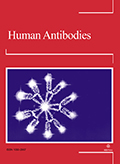Authors: Ben-Hur, Herzl | Gurevich, Pavel | Huszart, Monika | Ziv-Sokolovskyt, Nadja | Zion, Hagay | Isaegson, Dya | Berman, Valentina | Zusman, Igor
Article Type:
Research Article
Abstract:
The level of different immunoglobulins (IgA, IgG, IgM) in the tissues of 38 late fetuses and newborns was studied with peroxidase-labeled monoclonal antibodies. IgA+ and IgM+ lymphocytes were found in the spleen, lymph nodes and sometimes in the liver. IgG+ lymphocytes were not found. A high level of IgA+ material was found in the epithelium of the trachea, the epithelium and submucosal glands of the bronchi, but not the bronchioles, and in the epithelium of hepatic bile ducts and in their lumina. Such IgA is considered to be secretory-sIgA. Secretory IgA-containing epithelial cells appeared at 20 to 21 weeks of
…gestation; their number increasedfrom 2.5 cells/10,000 μm2 in 23- to 26-week-old fetuses, to 8 cells/10,000 μm2 in 36- to 40-week-old fetuses. Secretory IgG and IgM were not detected. Infetuses with pneumonia or sepsis, the number of IgM+ and IgA+ lymphocytes increased significantly. IgM+ lymphocytes appeared not only in the spleen and lymph nodes, but also in the lungs. In such cases, the number of sIgA-containing epithelial cells in the trachea, bronchi and intrahepatic bile ducts decreased, sometimes completely disappearing. The amount of IgA+ material in the lumina of these organs increased, reflecting an intensification of sIgA secretion during infections. The presence of a marked amount of sIgA in fetuses from week 20 of gestation is considered to reflect the high importance of this immunoglobulin against normal contamination by microbes after birth, and to evidence the early maturation of the immune system.
Show more
Keywords: Fetuses, full-term, low birth weight, newborns, secretory IgA, sepsis
DOI: 10.3233/HAB-1997-8302
Citation: Human Antibodies,
vol. 8, no. 3, pp. 119-123, 1997
Price: EUR 27.50





